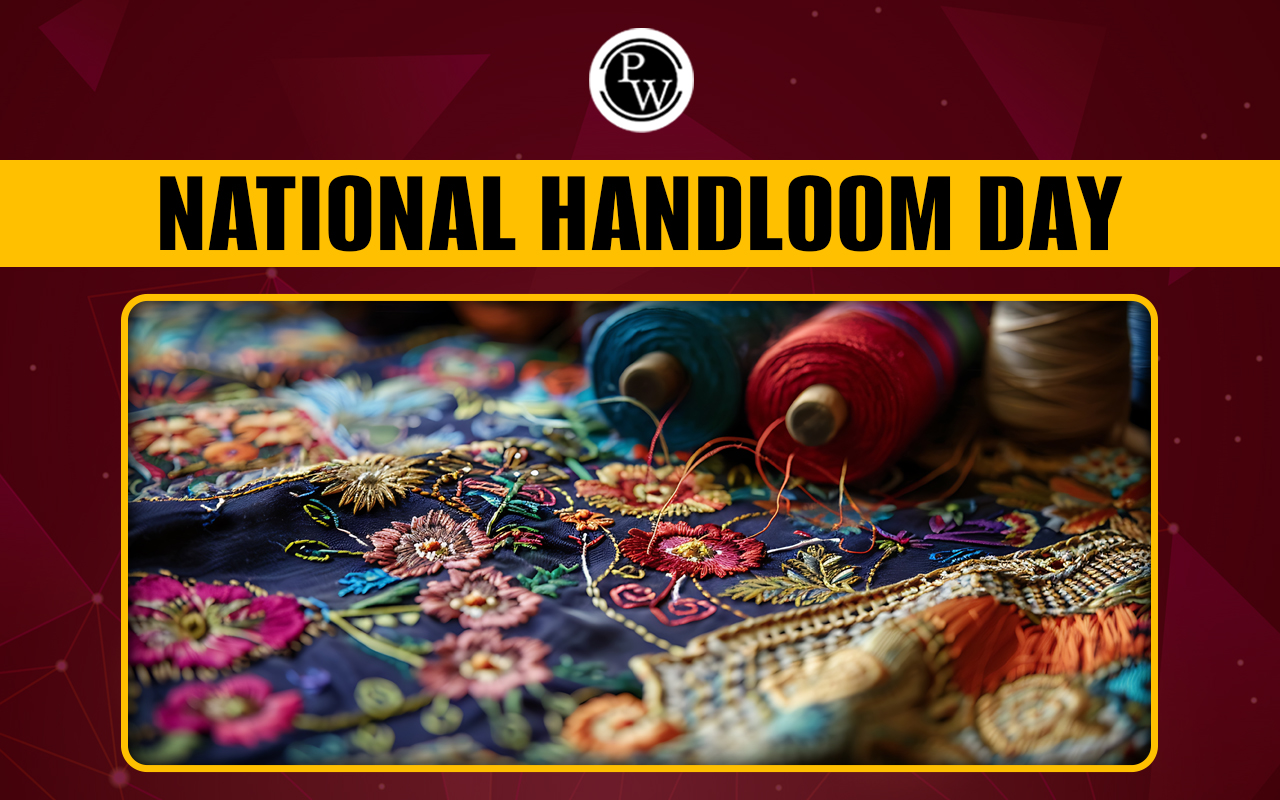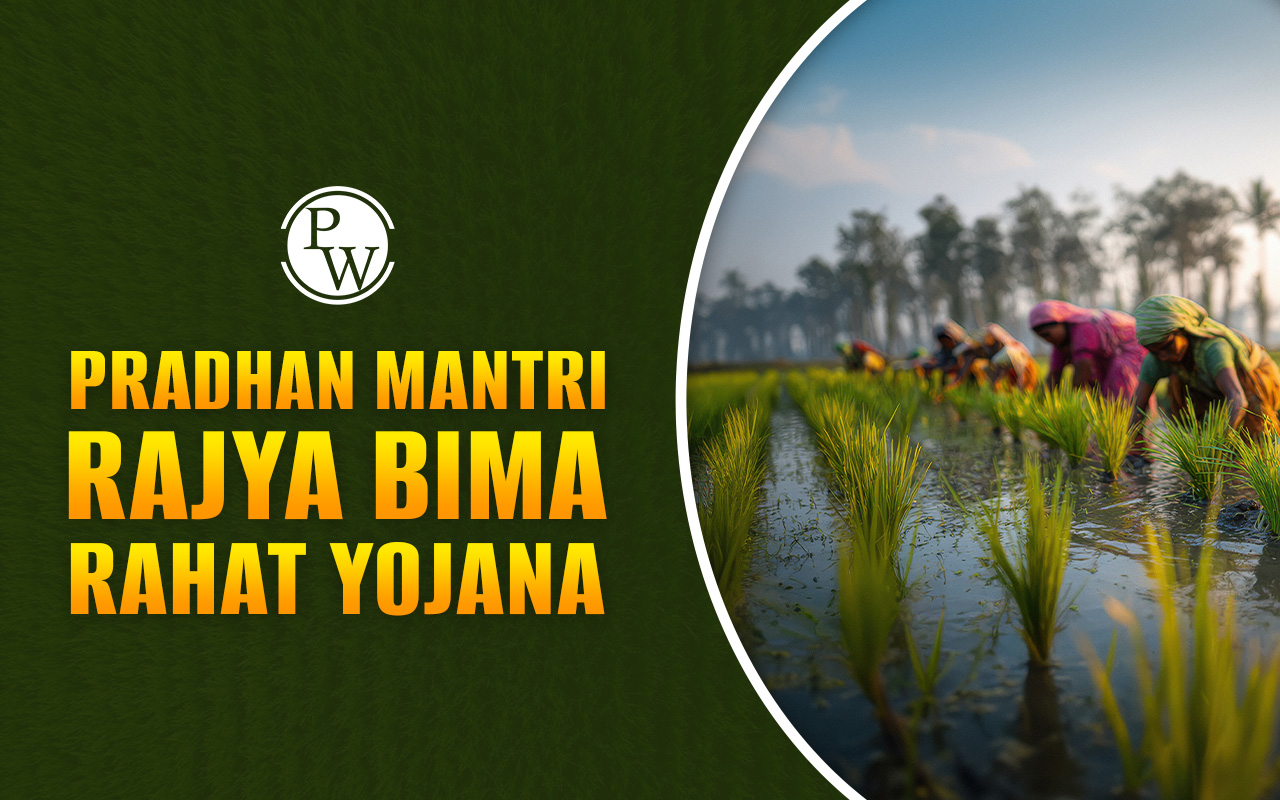

National Handloom Day 2024: Every year on 7th August, we celebrate National Handloom Day 2024 by honouring the handloom weavers and promoting the rich and diverse heritage of Indian handloom. But many many individuals wonder "What is National Handloom Day?" It is a celebration that recognizes the significance of the handloom industry and its contribution to India's socio-economic landscape.
The handloom sector in India is one of the oldest and most significant industries in the country and an integral part of its cultural legacy. It is also a significant source of livelihood for millions, especially women, in rural and semi-urban areas. For candidates who are preparing for the UPSC Exam , understanding National Handloom Day 2024 is essential, as it encloses various dimensions such as history, economy, culture, and social issues.
National Handloom Day 2024
National Handloom Day 2024 will be celebrated on August 7th, 2024 to honour India's rich handloom heritage. As the nation celebrates the 10th National Handloom Day 2024, Prime Minister Narendra Modi gave a call for ‘Vocal for Local. ’ The day promotes indigenous craftsmanship, supports weavers, and highlights the handloom sector's socio-economic significance.
| National Handloom Day 2024 Overview | |
|---|---|
| Aspect | Details |
| Date | August 7th |
| Inception | 2015, commemorating the Swadeshi Movement of 1905 |
| Purpose | To promote handloom products, support weavers, and celebrate India’s traditional textile heritage |
| Economic Contribution | Significant employment, rural development, and cultural preservation |
| Key Government Schemes |
|
National Handloom Day Theme 2024
Every year, National Handloom Day is celebrated with a specific theme that generally focuses on the priorities of the government in promoting the handloom sector. The National Handloom Day Theme 2024 aims to highlight the integration of technology and innovation in handloom weaving, fostering skill development, and expanding market access for weavers.
Historical Background of National Handloom Day
The celebration of National Handloom Day on August 7th holds significant historical importance. It was the day on which the Swadeshi Movement was formally launched in Kolkata in 1905. The Indian Government adopted and initiated this observance in 2015 to mark the centenary of the Swadeshi Movement, which emphasises self-reliance and indigenous craftsmanship.
- Swadeshi Movement: This movement aims at promoting self-reliance and reviving the domestic economy. It played an influential role in the Indian freedom struggle, by promoting local products and crafts to the Indian people.
- Symbol of Resistance: Handlooms became a symbol of resistance against colonial rule, promoting Indian crafts and empowering local artisans.
By observing National Handloom Day, India not only pays tribute to its rich handloom heritage but also acknowledges its role in the socio-economic development of the country.
Significance of Handlooms in India
The Handloom Sector in India is a significant and key performing part of the country's economy, culture, and social fabric. Here are some key aspects that underline the significance of National Handloom Day:
Economic Contribution
- Employment: The handloom industry is the second-largest employment provider in India after agriculture. According to the Handloom Census 2019-20, 35.22 lakh handloom workers were employed across the country, with a considerable portion of 25.46 lakh women and 26.73 lakh rural artisans weavers directly and indirectly throughout the country with 72% of them being women.
- Handloom Industry and Exports: Handloom products contribute significantly to India's export earnings was $1802.36 Mn during Apr-Mar 2024, India’s major exporters are the US, the UK, the UAE, Germany, France, Latin American Countries (LAC), Italy, Netherlands, and Canada, with countries like the USA, UK, Germany, and Japan being major importers.
- GDP Contribution: The sector contributes to industrial production around 14%, 4% of GDP, and makes up 13% of export earnings in India and plays a crucial role in the rural economy.
Cultural Significance
- Diversity: India has a rich diversity of handloom products, each representing unique regional identities and traditional craftsmanship. From Banarasi silk saris to Pashmina shawls .
- Artisan Heritage: The craft of handloom weaving has been passed down through generations, preserving traditional techniques and patterns that are integral to India’s cultural heritage.
Social Importance
- Empowerment: Handloom weaving provides empowerment to women, offering them economic independence and social recognition.
- Sustainability: Instead of mechanized production, handlooms are eco-friendly and sustainable, aligning with global trends towards sustainable fashion.
Government Initiatives and Policies
Actualizing the importance of National Handloom Day 2024 , the government has launched various schemes and policies aimed at promoting and supporting handloom weavers. Some of these initiatives include:
National Handloom Development Programme (NHDP)
- Objective: This programme aims to provide financial assistance for technology upgrades, marketing support, and skill development.
- Components: The programme includes comprehensive schemes for marketing, infrastructure development, and social welfare.
Handloom Weavers' Comprehensive Welfare Scheme
- Purpose: The purpose of this scheme is to provide health and life insurance coverage to handloom weavers.
- Coverage: This scheme offers insurance benefits under schemes like the Pradhan Mantri Jeevan Jyoti Bima Yojana (PMJJBY) and the Pradhan Mantri Suraksha Bima Yojana (PMSBY).
Yarn Supply Scheme
- Aim: This scheme is created to ensure the regular supply of yarn at reasonable prices, enhancing the production capacity of weavers.
- Subsidy: This scheme provides a subsidy on the cost of yarn to make handloom products competitive in the market.
MUDRA Scheme for Weavers
- Purpose: The MUDRA(Micro Units Development & Refinance Agency) scheme offers financial assistance to handloom weavers and artisans.
- Loan: Provides loans up to INR 10 lakhs for business development, supporting the growth of micro and small enterprises in the handloom sector.
Marketing Support
- Exhibitions and Fairs: The government organizes national and international exhibitions and fairs to provide a platform for handloom weavers to showcase their products.
- E-commerce Platforms: Collaboration with e-commerce giants to facilitate online marketing, ensuring broader reach and better sales.
Challenges Faced by the Handloom Sector
Despite its rich heritage and economic importance, the Handloom Sector in India faces several challenges. The National Handloom Day 2024 reflects the light on these undepressed issues and challenges weavers and artisans are facing continuously:
Competition from Power Looms
- Mechanization: The rise of mechanized power looms has surpassed and neglected the use of traditional handlooms, leading to reduced demand and lower prices for handloom products.
- Cost-Effectiveness: Power looms produce textiles more rapidly and cost-effectively, creating a significant threat to handloom weavers.
Lack of Modernization
- Technology Gap: Many weavers still use traditional methods and lack access to modern technology which affects productivity and quality.
- Skill Development: There is a need for comprehensive training programs to upgrade skills and introduce innovative designs that can help the artisans and weavers by developing new efficient skills.
Market Access
- Limited Reach: Handloom products often have limited market access, with many weavers unable to connect directly with consumers.
- Middlemen Exploitation: Weavers are often exploited by middlemen, who take a significant share of the profits, leaving the artisans with insufficient and low earnings.
Financial Constraints
- Lack of Credit: Many weavers face difficulties in accessing credit facilities, which hinders business expansion and modernization.
- High Input Costs: The rising cost of raw materials and yarn affects the profitability of handloom weaving, making it less sustainable for artisans.
Relevance of National Handloom Day to UPSC Preparation
Understanding National Handloom Day 2024 and the Handloom Sector in India is necessary for UPSC aspirants for several reasons:
Economy
-
GDP Contribution: The Handloom sector’s contribution to the GDP and its role in employment generation can be relevant for economy-related questions in UPSC exams.
-
Handloom Industry and Exports: Awareness of the sector’s export potential and its role in India's trade can be crucial for understanding economic policies.
Social Issues
- Rural Development: The handloom sector’s impact on rural development, women empowerment, and social equity is often a topic in UPSC Mains.
- Cultural Preservation: Questions related to cultural heritage and the preservation of traditional crafts may be explored in the context of social issues .
Government Schemes
-
Policies and Initiatives: Familiarity with government schemes and policies aimed at supporting the handloom sector is essential for both Prelims and Mains.
-
Skill Development: Understanding the role of skill development and modernization in uplifting traditional sectors is an essential aspect of governance and public administration.
Environment and Sustainability
- Eco-Friendly Practices: Handlooms as a sustainable industry align with global environmental goals and can be related to questions on sustainable development.
- Climate Change Mitigation: The low carbon footprint of handlooms supports discussions on climate change mitigation strategies.
Celebrating National Handloom Day highlights the need for modernization, empowerment, and sustainable growth within the industry. By preserving traditional crafts and supporting artisans, India can continue to showcase its rich textile legacy to the world. Incorporating these crucial details about the handloom sector into your UPSC preparation will not only enhance your understanding of India's diverse economy and culture but also help you to equip insights into the complex issues that shape the nation.
For more insights into India's socio-economic landscape and cultural heritage, consider joining our comprehensive UPSC preparation course . Enhance your understanding of topics like National Handloom Day 2024 and many more, ensuring a well-rounded preparation for your civil service exams.National Handloom Day FAQs
What is National Handloom Day?
Why is National Handloom Day celebrated?
Who launched the National Handloom Day?
What is the National Handloom Day Theme 2024?
How does the Handloom Sector in India contribute to the economy?
What role does the Handloom Industry and Exports play in India's trade?










